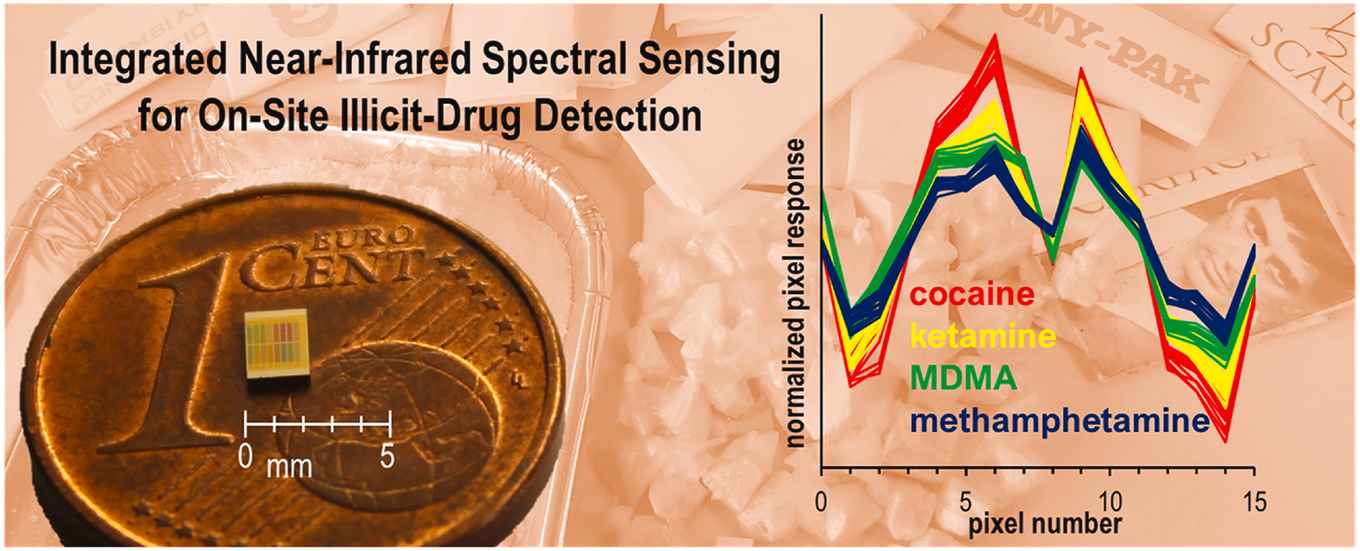Illicit-drug detection with a miniaturized integrated NIR sensor
23 May 2022

Abstract
Illicit-drug production, trafficking and seizures are at an all-time high. This consequently raises pressure on investigative authorities to provide rapid forensic results to assist law enforcement and legal prosecution in drug-related cases. Ideally, every police officer is equipped with a detector to reliably perform drug testing directly at the incident scene. Such a detector should preferably be small, portable, inexpensive and shock-resistant but should also provide sufficient selectivity to prevent erroneous identifications. This study explores the concept of on-site drugs-of-abuse detection using a 1.8 × 2.2 mm2 multipixel near-infrared (NIR) spectral sensor that potentially can be integrated into a smartphone. This integrated sensor, developed by the team of prof. Andrea Fiore of Eindhoven University of Technology, is based on an InGaAs-on-silicon technology to exploit an array of resonant-cavity enhanced photodetectors without any moving parts. A 100% correct classification of 11 common illicit drugs, pharmaceuticals and adulterants was achieved by chemometric modelling of the response of 15 wavelength-specific pixels. The performance on actual forensic casework was investigated on 246 cocaine-suspected powders and 39 MDMA-suspected ecstasy tablets yielding an over 90% correct classification in both cases. These findings show that presumptive drug testing by miniaturized spectral sensors is a promising development ultimately paving the way for a fully integrated drug sensor in mobile communication devices used by law enforcement.
Paper details
Ruben F. Kranenburg, Fang Ou, Petar Sevo, Maurangelo Petruzzella, Renee de Ridder, Anne van Klinken, Kaylee D. Hakkel, Don M.J. van Elst, René van Veldhoven, Francesco Pagliano, Arian C. van Asten, Andrea Fiore: On-site illicit-drug detection with an integrated near-infrared spectral sensor: A proof of concept, Talanta, Volume 245, 2022, 123441 DOI: 10.1016/j.talanta.2022.123441